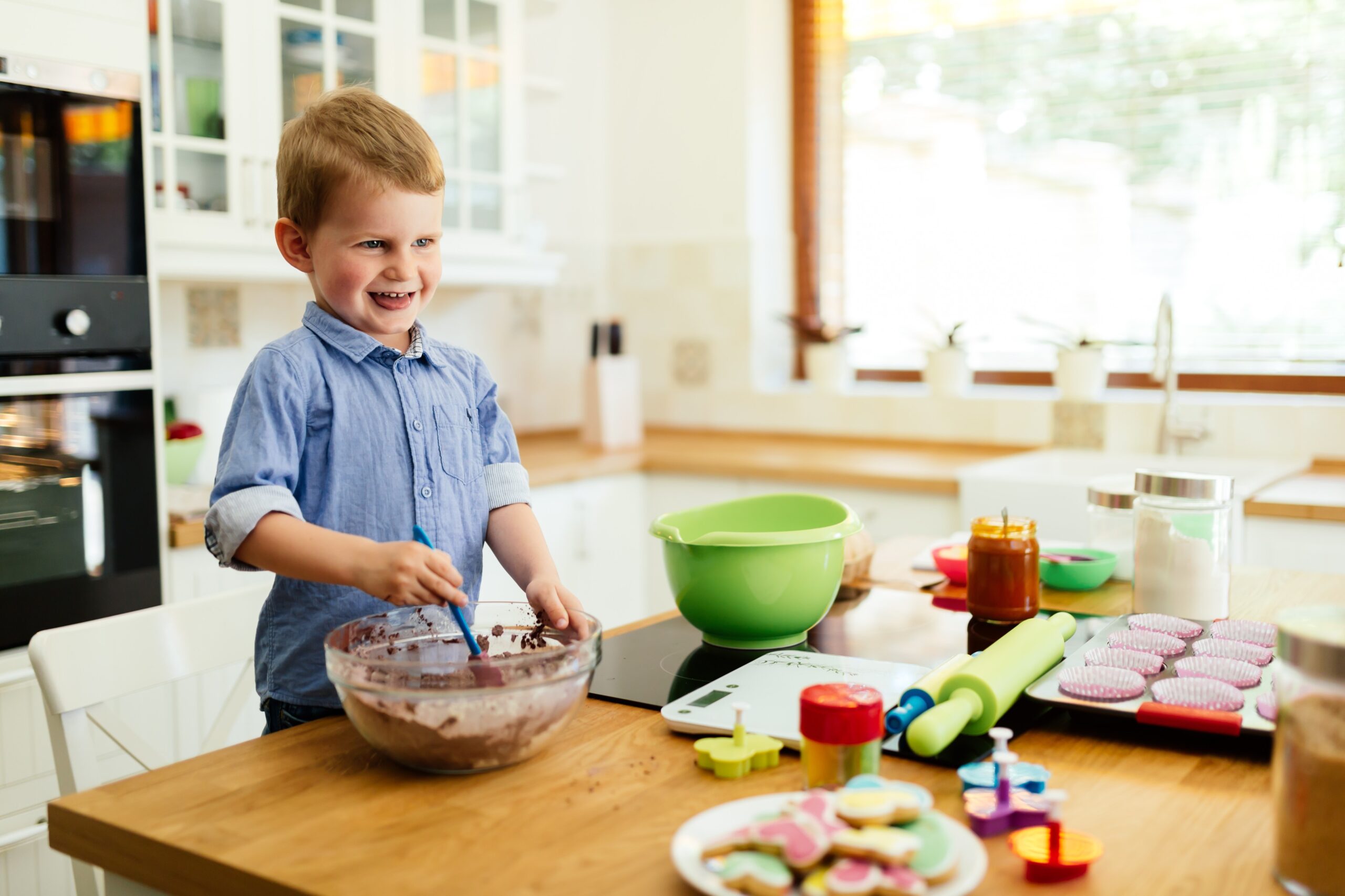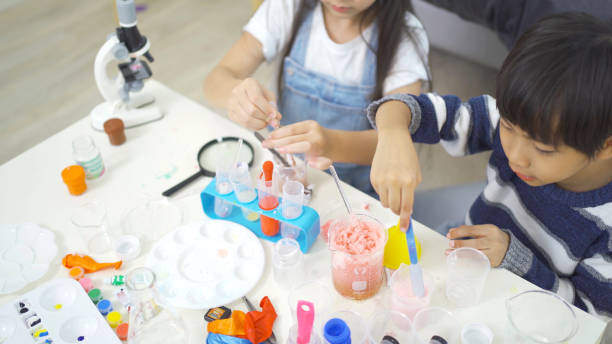Sensory Analysis Guide for the Children's Products Industry
Introduction :
Welcome to the "Sensory Analysis Guide for the Children's Products Industry." In this comprehensive guide, we will delve into the fascinating world of sensory analysis and explore its significance in the context of products designed for children. With over 500 words, this introduction sets the stage for a deep dive into the realm of sensory evaluation.
Sensory analysis is a multidisciplinary field that plays a central role in the development, quality control, and marketing of products specifically tailored for children. From toys to food products, understanding how children perceive and interact with these items is essential to create offerings that resonate with them.


This book aims to equip professionals, researchers, and enthusiasts in the children's products industry with the knowledge and tools needed to conduct effective sensory evaluations. Whether you are a product developer seeking to create irresistible toys or a marketer looking to better understand your target audience, the information within these pages will prove invaluable. Over 15 chapters, we will explore the fundamental principles of sensory analysis, including setting up sensory analysis programs, selecting sensory panels, sensory evaluation techniques, and interpreting sensory data.
We will also delve into practical applications, such as integrating sensory analysis into product development and quality control processes. Real-world case studies and discussions on emerging trends in sensory analysis for children's products will provide additional depth and context. As we embark on this sensory journey, you will develop a profound appreciation for the nuances of sensory perception in children and how this knowledge can be leveraged to create products that captivate their senses and enhance their experiences. Without further delay, let's begin our exploration of sensory analysis in the enchanting world of children's products.
Chapter 1 : Introduction to Sensory Analysis
In Chapter 1, we will delve into the basics of sensory analysis, laying the foundations for our journey into the world of children's products and their perception by young minds. With over 1000 words, we will explore key concepts and principles underlying sensory analysis, from sensory attributes of products to the sensory evaluation process itself. This chapter forms the basis on which our sensory analysis guide rests, providing you with a solid understanding of essential vocabulary and methodologies used in sensory science. Get ready to unveil the secrets of sensory perception and its relevance in the world of children's products.
Chapter 2 : The Importance of Sensory Analysis in the Children's Products Industry
In the second chapter, we will deepen our understanding of the crucial importance of sensory analysis in the children's products industry. We will explore how this discipline goes beyond simple sensory evaluation and contributes to shaping products that come into contact with children's daily lives. With a critical eye, we will dissect the reasons why a sensory approach is essential to ensure that products intended for children meet their unique needs and provide enriching experiences.

Chapter 3 : Setting Up a Sensory Analysis Program
The third chapter will be dedicated to setting up a robust sensory analysis program. We will explore the necessary steps to create a strong infrastructure for consistently and reliably conducting sensory evaluations. From planning to human resource management, we will cover all key aspects to ensure the success of your sensory analysis program.
Chapter 4 : Selecting the Right Sensory Panel
The fourth chapter will focus on selecting the appropriate sensory panel. You will discover how to choose individuals who will participate in sensory evaluations, emphasizing essential characteristics such as diversity, training, and objectivity. A well-chosen sensory panel is key to obtaining accurate and meaningful data.
Chapter 5 : Sensory Evaluation Techniques
In the fifth chapter, we will explore in detail the available sensory evaluation techniques. You will learn methods and tools that will allow you to accurately measure children's sensory responses. From descriptive analysis to hedonic scales, you will understand how to use these techniques to gather useful information about children's products.

Chapter 6 : Creating Sensory Evaluation Forms
The sixth chapter will focus on creating sensory evaluation forms tailored to children's products. We will discuss key elements to include in these forms, how to structure questions, and data collection. A good sensory evaluation form is essential for gathering actionable information during sensory tests.
Each upcoming chapter will dive even deeper into the complex world of sensory analysis for children's products, providing you with in-depth knowledge and practical tools for success in this demanding industry. Stay with us for a rewarding exploration of this exciting field.
Chapter 7 : Conducting Sensory Tests
The seventh chapter will detail the conducting of sensory tests. You will discover crucial steps for conducting tests with children, including preparing the environment, managing participants, and collecting data. We will also address specific considerations related to safety and interaction with children during evaluations.

Chapter 12 : Sensory Analysis in Marketing
The twelfth chapter will explore how sensory analysis can be a powerful asset in the field of marketing children's products. You will discover how to use sensory results to develop effective marketing strategies and create advertising campaigns that captivate the senses of children and their parents.
Each chapter will bring you closer to mastering sensory analysis in the children's products industry. You will gain essential skills to successfully develop, enhance quality, and market products for the youngest consumers. Stay with us for the exciting continuation of this guide.

Chapter 13 : Case Studies in Sensory Analysis
The thirteenth chapter will be dedicated to exploring real case studies in sensory analysis for children's products. Dive into concrete examples where sensory analysis has played a key role in the development, quality, or marketing of specific products. These case studies will offer practical insights into the application of sensory analysis in the children's products industry.
Chapter 14 : Emerging Trends in Sensory Analysis for Children's Products
The fourteenth chapter will explore emerging trends in sensory analysis for children's products. The industry is constantly evolving, and you will discover new approaches, innovative technologies, and emerging concerns shaping the future of sensory analysis in this field.
Chapter 15 : Future Perspectives in Sensory Analysis
In the fifteenth and final chapter, we will look towards the future of sensory analysis for children's products. Explore the challenges and opportunities on the horizon, as well as the directions this discipline could take. You will be ready to anticipate industry developments and adapt to new consumer demands.
This book has been designed to provide you with a comprehensive understanding of sensory analysis in the context of children's products. Each chapter has been carefully crafted to give you the knowledge, skills, and perspectives needed to excel in this exciting and ever-changing industry. We hope this guide will be a valuable resource for anyone interested in creating sensory-stimulating products for children and enhancing their experience. We invite you to continue reading and delve deep into the world of sensory analysis for children's products.





